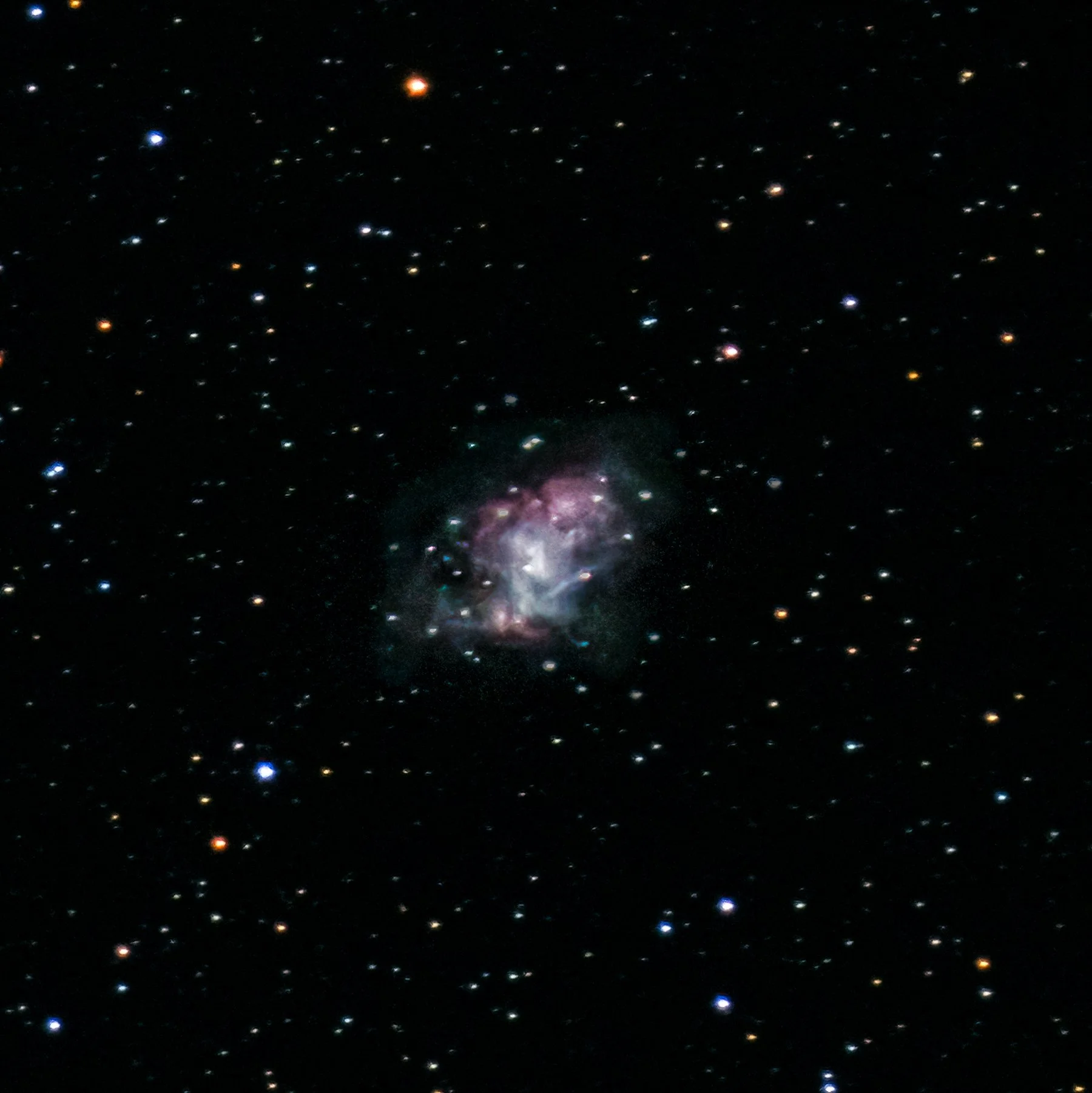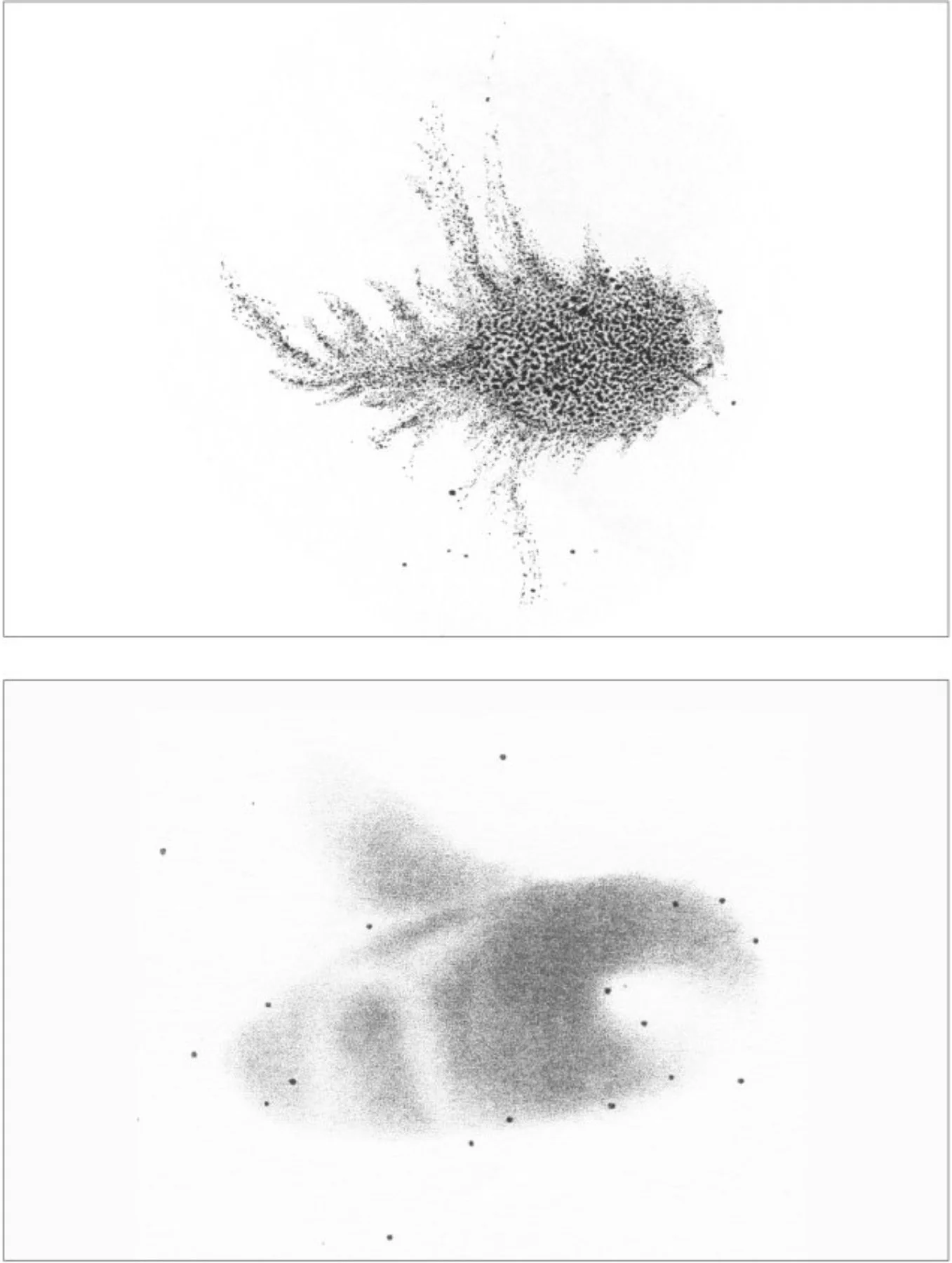M1 - Crab Nebula
Type: Galactic Nebula
Discoverer: John Bevis, 1731
Size: 10 ly
Distance: 6200 ly
Constellation: Taurus
My Notes: I took this on February 10th, 2023, during the Prairie Astronomy Club’s annual “How to use your telescope” class at the Branched Oak Observatory in Nebraska. After helping the guests with their scopes, I was able to spend some time capturing the first item on the Messier list. It’s nice to finally cross off #1. For this object, I broke from the astrophotography bible and tried using my higher-megapixel camera. The rule tends to be to use fewer megapixels so that each pixel is bigger and can collect more light. Since modern sensors are generally higher megapixels, I think an argument could be made for modern sensors having a better signal-to-noise ratio that could offset the smaller pixel sizes (excluding dedicated astro cameras). I also wondered if more detail could be picked up by having more megapixels. I needed to try it out for myself. This image seemed to clean up fine, and the noise was very tolerable. The object was extremely small in the overall 40-megapixel image, so while the detail is better, I do understand the argument for bigger megapixels since this object lit up a very small fraction of the sensor. I think in the future, I should try an object with both my 21-megapixel camera and the 40-megapixel one to really tell once and for all.
I spent about 3-4 hours capturing this, but midway through imaging, something on my setup must have slipped. I’m not sure if it was a gear, a tripod, or the camera mount, but I came back from warming up in my friend’s observatory building to find that the object was no longer centered in my frame. I had to throw those images out because I couldn’t get them to align properly.
M1 is the remnant of a supernova that was able to be seen by the naked eye in daylight for 23 days by Chinese astronomers between July 4th-27th in 1054 AD. It remained visible at night for nearly 2 years until April 17th, 1056, before it faded from unaided view. It would have gone supernova about 200 years before civilization developed in the fertile crescent in Mesopotamia, around 4200 BC.
Messier Notes: (Sept. 12th, 1758) ‘Nebulosity above the southern horn of Taurus. It contains no star; it is a whitish light, elongated like the flame of a taper, discovered while observing the comet of 1758. Observed by Dr Bevis in about 1731. It is reported on the English Celestial Atlas.’ 'Seen by Dr Bevis in about 1731 according to his letter to me of 10th June 1771.’
Bode: (Nov. 8th, 1774. ‘A small nebulous patch without stars.’
Rosse: (1844) ‘A cluster … it is no longer an oval resolvable Nebula; we see resolvable filaments singularly disposed, springing principally from its southern extremity, and not, as is usual in clusters, irregularly in all directions. Probably greater power would bring out other filaments, and it would then assume the ordinary form of a cluster …’
8 Frame Stack - Median - 60 sec at f/8.0 600mm (918eq) ISO 2000 Fujifilm X-H2 XF150-600F5.6-8
Full image of M1 at 600mm (918eq) at 40 megapixels
Historical Drawings by Lord Rosse (1844, 1853)



